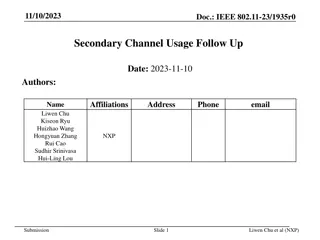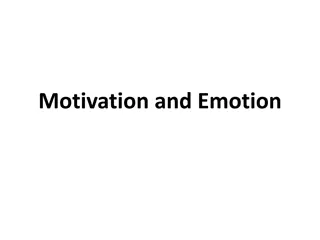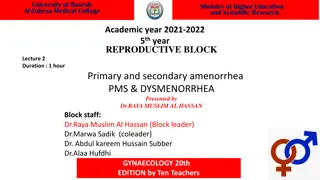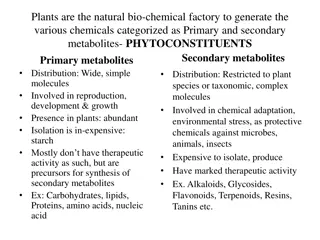Understanding Motives: Primary vs. Secondary Motives and Their Impact
Motives are incentives that drive human behavior, divided into primary (biological) and secondary (psychosocial) types. Primary motives are essential for survival, such as hunger and thirst, while secondary motives, learned through life experiences, influence personality development. Social motives encourage interaction and unity, while psychological motives relate to self-esteem and behavior. Understanding these motives is crucial for comprehending human behavior and emotions.
Download Presentation

Please find below an Image/Link to download the presentation.
The content on the website is provided AS IS for your information and personal use only. It may not be sold, licensed, or shared on other websites without obtaining consent from the author. Download presentation by click this link. If you encounter any issues during the download, it is possible that the publisher has removed the file from their server.
E N D
Presentation Transcript
MOTIVE An incentive to act or a reason for doing something or anything that prompted a choice of action. Anything that arouses the individual and directs his or her behavior towards some goal is called a Motive.
Types of Motives There are two popular types of motives: Primary or biological Secondary or psychosocial
PRIMARY MOTIVE Primary motives also known as biological motives, have a definite physiological basis and are biologically necessary for survival of the individual or species. These arouse the behavior of the organism in directions that lead to the required change in internal environment. The sources of biological motivational needs include: Decrease hunger, thirst, discomfort, etc. maintain homeostasis, balance
SECONDARY MOTIVES Secondary motives are learned motives and are sometimes known as psychsociological motives. They are not physiologically based. These are the causes of the development of a personality. Secondary motives originate during our life time. They are acquired and learned through our interaction with people. They are classified in two types which are: Social motives Psychological motives
SOCIAL MOTIVES Social motive are those which motivates us to go out, interact with people and do the things that gives a feeling of pleasure and satisfaction. Social motive evoke unity love sympathy love cooperation coordination and the formation of a leadership in a group for its existence and survival. Everybody loves to live according top his social norms. Social Motive helps to Imitate positive models Be a part of a group or a valued member Know one s self
PSYCHOLOGICAL MOTIVES Psychological motives are individualistic in nature as they are related to self esteem, self security, self freedom and self assertion. As psychology is the scientific study of an individual s behavior in relation to his environment, psychological motives are regarded very important in the development of an individual s behavior and personality. Emotions are psychological perspectives and Emotions occur as a result of an interaction between perceptions of environmental stimuli, neural/hormonal responses to these perceptions.
So psychological motives are very important because our emotions motivate us to do thing. Psychological motives help us in many things like: Maintain attention to something interesting or threatening. Develop meaning or understanding. Increase/decrease cognitive disequilibrium; uncertainty.
Secondary or psychosocial motive are important to live a happy life and adequate satisfaction of secondary motives is necessary for mental health to avoid depressions etc. Psychosocial or secondary motives contain: Need for affection Power motive Need for achievement Need for affiliation Need for security Status motive

























